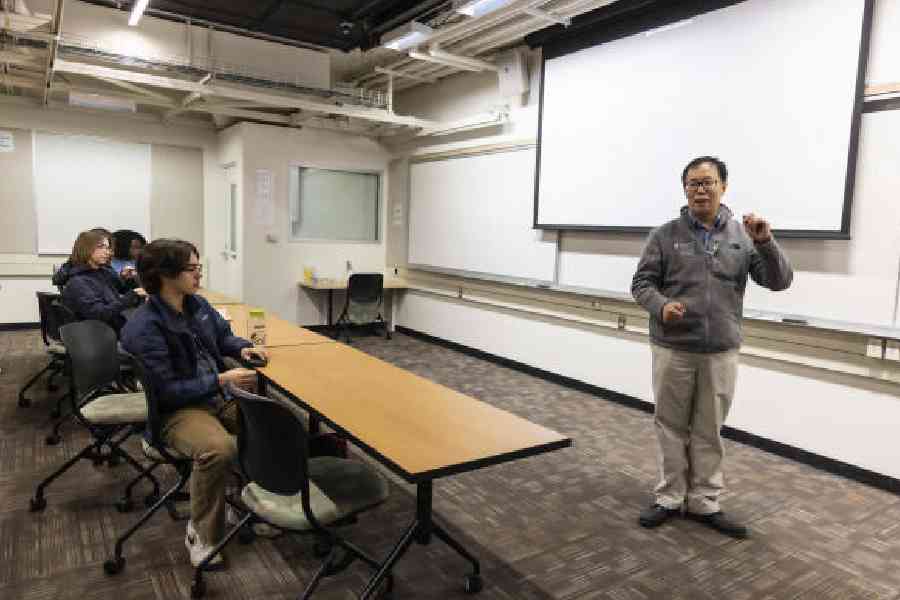Life lessons; When this professor of medicine got cancer, he taught a class about it


Dr Bryant Lin stood before his class at Stanford University in the US in September, likely one of the last he would ever teach.
Just 50 years old and a nonsmoker, he had been diagnosed with Stage 4 lung cancer four months earlier. The illness is terminal, and Lin estimated that he had roughly two years left before the drug he was taking stopped working. Instead of pulling back from work, he chose to spend the fall quarter teaching a course about his own illness. Dr Lin, a clinical professor and primary care physician, was a founder of the Stanford Center for Asian Health Research and Education. One of its priorities has been nonsmoker lung cancer, a disease that disproportionately affects Asian populations.
Registration for the class had filled up almost immediately. Now the room was overflowing, with some students forced to sit on the floor and others turned away entirely.
He told his students he wanted to begin with a story that explained why he chose to pursue medicine. He picked up a letter he had received years earlier from a patient dying of chronic kidney disease. The man and his family had made the decision to withdraw from dialysis, knowing he would soon die.
Dr Lin adjusted his glasses and read, choking up again.
“‘I wanted to thank you so much for taking such good care of me in my old age,’” he read, quoting his patient. “‘You treated me as you would treat your own father.’”
Dr Lin said this final act of gratitude had left a lasting impact on him. He explained that he had created this 10-week medical school course — “From Diagnosis to Dialogue: A Doctor’s Real-Time Battle With Cancer” — with similar intentions.
“This class is part of my letter, part of what I’m doing to give back to my community as I go through this,” he said.
Later, an 18-year-old first-year student in his first week at Stanford caught up on a recording of the class, which was also open to students outside the medical school. The course had filled up before he could enrol, but after emailing Dr Lin, he received permission to follow along online.
Dr Lin had a couple of ambitions for his own message to his students. He liked to think that some of them, having taken his course, might go on to dedicate themselves to some aspect of cancer care. And he wanted them all to understand the humanity at the core of medicine.
Dr Lin’s class met for about an hour each Wednesday. One week, he led a session on having difficult conversations, where he stressed that doctors should be honest enough to say “I don’t know” when necessary — an answer he had to accept as a patient amid the uncertainties of his own diagnosis.
In another class, he discussed how spirituality and religion help some patients cope with cancer. Though he isn’t religious, he shared that he found comfort in others’ offering to pray, chant or light a candle on his behalf.
And in a session on the psychological impact of cancer, Dr Lin spoke about the disappointment he felt after a scan showed that some of his tumours had shrunk but hadn’t disappeared — because, deep down, he was still holding out hope for a miracle.
He taught the sessions using what he described as the “primary care” model. He was the initial point of contact, sharing how his cancer diagnosis had affected him, but he referred his students to specialists — guest speakers — when more exploration was needed.
Watching Dr Lin teach, I often wondered what his students were thinking. What was it like for them to become attached to him as a professor, knowing his prognosis was so dire?
When I asked, some used the phrase “once-in-a-lifetime opportunity” to describe the course. Others saw him as brave.
It was difficult for some students to reconcile his upbeat attitude with the severity of his diagnosis. Gideon Witchel, of Austin, Texas, US, was one. He was the 18-year-old student who had watched a recording of the first class from his dorm room. A spot had since opened up, and now he was enrolled.
When Witchel was five years old and his sister was three, his mother, Danielle Witchel, was diagnosed with breast cancer, but he had never talked to her about it in depth. He was taking Dr Lin’s class in hopes that it would help him start that conversation.
For the last class, Dr Lin and his students met in a library at Stanford Hospital.
It seemed clear that Dr Lin had achieved at least some of his goals. When he asked whether students were thinking of careers in cancer care, about a third raised their hands. The ones planning to be doctors told me they would remember Dr Lin’s story when seeking to understand their patients’ experience of illness.
For Witchel, the effect of the quarter was more personal. He had finally talked to his mother about her cancer. For the first time, Gideon Witchel felt he was interacting with his mother as an adult.
NYTNS